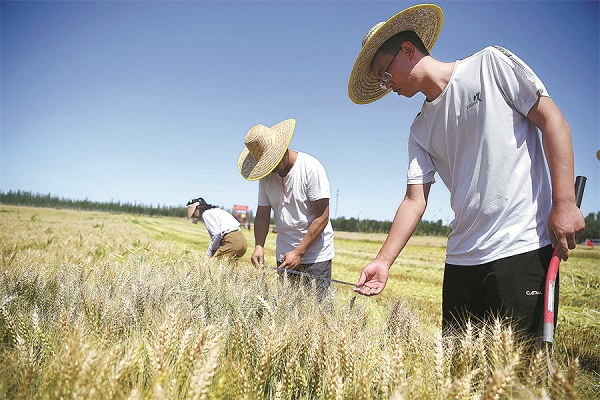Yellow River protection efforts bolstered

Technicians measure the height of wheat grown on an experimental water-conservation field alongside the river in Wuzhong, Ningxia Hui autonomous region. WANG PENG/XINHUA
Cultural protection
The Yellow River Basin is home to numerous cultural relics, ancient documents and other important cultural heritage items, and protecting them is key to promoting the inheritance of Chinese civilization.
The new law states the need to protect, inherit and promote the Yellow River's culture.
It stipulates that cultural, tourism and related authorities must record and file details of important heritage items such as cultural relics and historic sites, intangible cultural heritage, ancient books and documents to establish a basic database for Yellow River cultural resources.
The protection of intangible cultural heritage and tangible heritage in the Yellow River Basin should be enhanced, the law states. Such work includes well-known historical and cultural villages, towns and cities, historical and cultural blocks, villages with ethnic minorities, and ancient dikes and irrigation projects.
Every autumn, an arts festival featuring Manhan Opera, a national-level intangible cultural heritage, is staged in Jungar Banner, Inner Mongolia autonomous region, to promote time-honored Yellow River art forms.
Shi Weisheng, professor in the vocal music department at Inner Mongolia University, said Manhan Opera was created on fertile land in the Yellow River Basin. The art form integrates Yellow River and grassland culture, Shi added.
The new law calls for the best use of cultural heritage sites, museums, memorial halls, exhibition halls, education bases, water projects and other resources, and for the comprehensive use of information technology to systematically display Yellow River culture.
At a museum in Gaoqing county, Shandong, more than 20,000 items related to the Yellow River are on display, including documents on management of the waterway, tools and household utensils used in the Yellow River Basin, and ancient rubbings, books and letters about the river.
Wang Shuqing, 60, who has spent three decades collecting ancient items related to the river, said: "This material gives us the chance to study how people worked hard to manage the river and earn a good living from it. We can use these precious items to tell our children stories about the Yellow River."
Ma Jun, a member of the Chinese People's Political Consultative Conference National Committee, said cultural and tourism resources need to be integrated to protect and promote the Yellow River.
The waterway's cultural connotations should also be analyzed from different perspectives of society, the economy, environment, science and technology, Ma added.
- Top legislature schedules session for December
- China's top legislator holds talks with president of Luxembourg parliament
- China's top legislator meets with French president
- China, Maldives pledge to enhance exchanges between legislative bodies
- Senior Chinese legislator meets Portugal's PSD delegation



